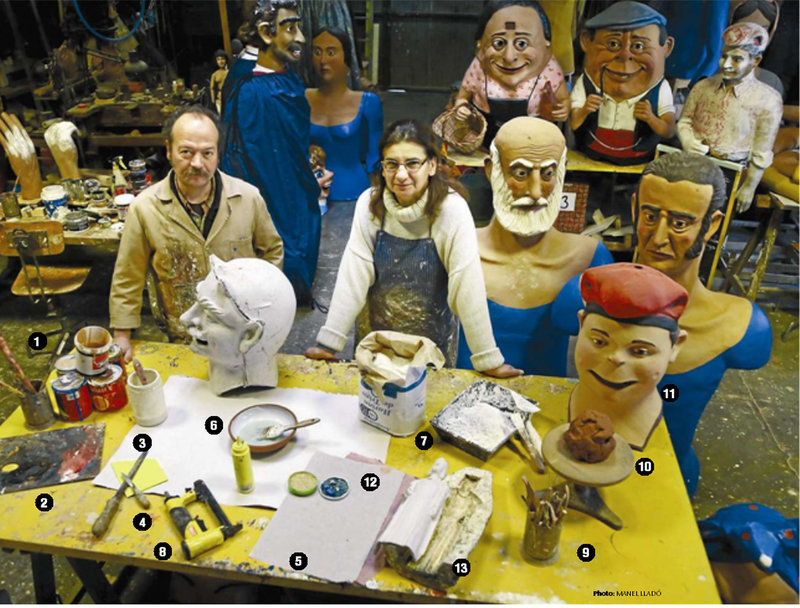Neus Hosta & David Ventura
Giant-makers
In 1982, near Figueres, Navata (Alt Emporda) Neus Hosta and David Ventura created a world of fantasy: a workshop dedicated to the creation of cardboard figures and specialising in the making and restoration of Catalonia's popular traditional gegants (giants) and capgrossos (giant heads). David is a jeweller by profession and was a member of the puppet show theatre group Col·lectiu d'Animació de Barcelona until 1980, while Neus is a potter, trained at the Escola Massana in Barcelona and the Escola de Ceràmica de La Bisbal D'Empordà. Together, their talents create splendid figures.
It takes time and patience, hard work and skill. First, a clay sculpture is made to fashion the plaster mould which is the base of the cardboard figure. Then it is dried and painted. In the case of the giants, a very important part is finishing it off in a de fined style and creating its unique costume. To do this they have the help of a designer who fashions the clothes under their supervision.
The giants are built in parts: head, arms, hands... and then pieced together. Neus and David also make smaller reproductions of giants, as well as made-to-order figures to suit all needs.
In recent years the partners have offered courses which teach how to make a capgross and participants get to take home their own creations. You can find more information on their website.
1. Pot with brushes
2.Painter's palette
3. Pot of rabbit skin glue (primer)
4. File, knife and sandpaper
5. Sander for cardboard and cardboard pieces - wet stone
6. Carpenter's glue
7. Flour, rabbit skin glue and copper sulphate
8. Stapler
9. Modelling tools
10. Ball of clay
11. Finished Capgross
12. Gypsum plaster
13. Plaster mould

